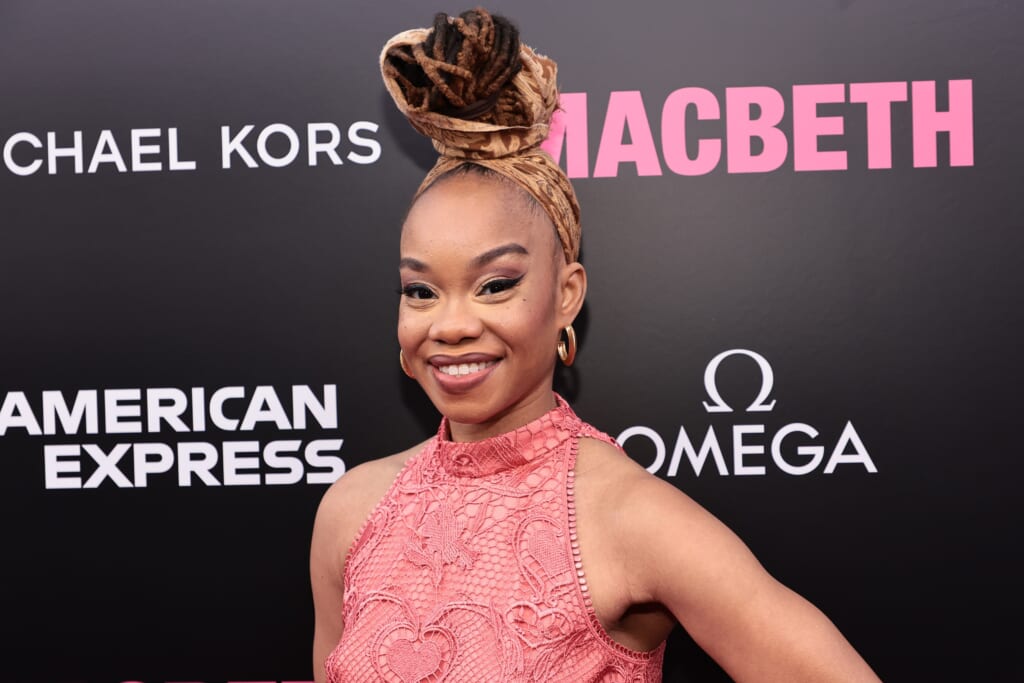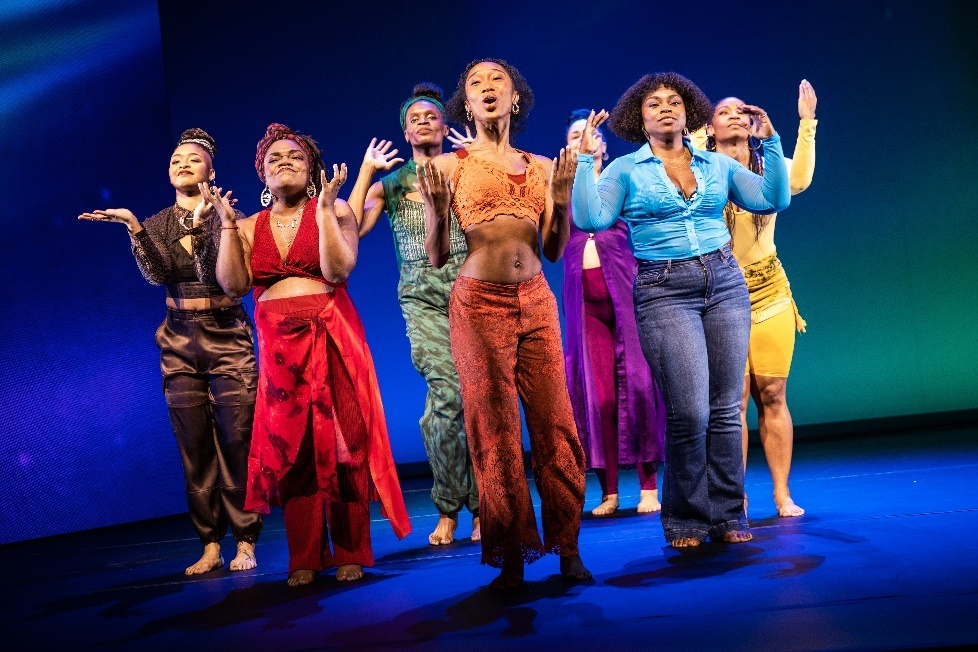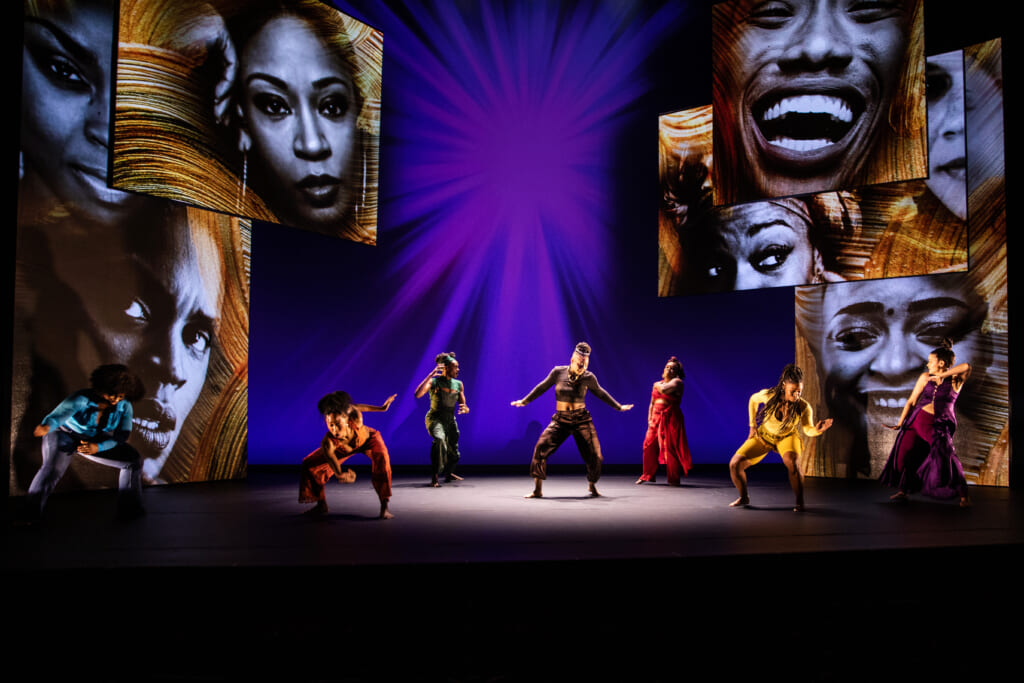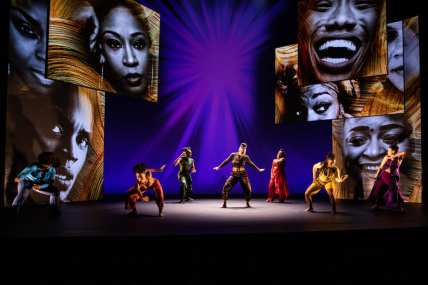Pioneering Camille A. Brown creates a Broadway rainbow
Choreographer Brown is the creative force behind the 'for colored girls' revival
When choreographer Camille A. Brown is asked to describe her kind of movement, she uses an analogy from the kitchen.
“It’s everything. It’s modern, it’s hip-hop, it’s tap, it’s jazz, it’s ballet, it’s social dance. I call it a jambalaya. You stir it up in a pot and you put your own seasoning on it. And then when it comes out into the bowl, it’s who you are.”

Audiences are getting to enjoy the special flavor of Brown’s work as she caps a remarkable year of stirring the traditional musical pot. She became the first Black director to create a mainstage Metropolitan Opera production and is the first Black woman to serve as both director and choreographer of a Broadway production in over 60 years.
“It’s about Black women being able to share our stories on these platforms that were not made for us,” she said. “How empowering it is to be in spaces that were not necessarily made for you, but you are making space inside of it.”
On Broadway, Brown has been applauded for shepherding a spring Broadway revival of Ntozake Shange’s “for colored girls who have considered suicide/ when the rainbow is enuf.”
Shange’s amalgamation of words, motion, and music uses seven Black women to weave together strands of abuse, resilience, heartbreak, and motherhood into a tapestry of shared womanhood. Brown said she wanted to “pull out the joy.”
“Even though there’s so much heartbreak — they’re devastating stories — but they’re also stories of reclamation and also stories of empowerment and truth and laughter. Sometimes we have to laugh through the pain,” she said.

In a brilliant stroke, one of her seven actors, Kenita R. Miller, was pregnant through much of the run. Miller, who went on maternity leave Tuesday, was called upon to deliver one of the more gut-wrenching stories, a woman who watches her abusive husband kill their two children.
“It helps to elevate the story and make it more devastating because she’s talking about the loss of these kids while she’s in preparation to have her first child,” said Brown.
Some of Brown’s other high-profile credits include choreographing “Ma Rainey’s Black Bottom” and the Emmy Award-winning “Jesus Christ Superstar Live” with John Legend and Sara Bareilles.
“She just has a beautiful strength and kind of quiet power about her. She’s small in stature, but she has a tremendous amount of gravitas as a creator,” said Bareilles. “I was so happy to see her getting this kind of recognition for this really extraordinary piece that I just feel so lucky that I got to see on Broadway.”
Brown, the founder and artistic director of Camille A. Brown & Dancers, was born three years after “for colored girls” made it to Broadway in the late 1970s, but her mother saw it and made it a subtle part of her daughter’s childhood.
Mom often counselled Brown not to let anyone take her stuff away, a figurative line from the play about protecting yourself. “It was only until a couple of years ago that she told me it was from the show,” said Brown. “All of a sudden, it just made sense.”
Brown took Shange’s work and added small updates to help it connect with today’s audiences, like adding “jig-a-low” to a list of nursery rhymes and replacing a reference to the ’60s anthem “Dancing in the Street” by Martha and the Vandellas to SWV’s “I’m So Into You” from the ’90s.
“When you tap into who you are specifically, I think that’s really important, especially because that’s what Ntozake did with this work,” said Brown. “There’s so much of her that’s interwoven inside of the poem, she almost gives you a guide of how to work through it. And part of it is being yourself and putting yourself inside of it.”
The show has earned seven Tony nominations, two for Brown’s choreography and for her directorial debut. Even so, the show will close early, despite an independent social media campaign paying for patrons to see it, something Brown is grateful for.

“The fact that this show by a Black woman, directed and choreographed by a Black woman, performed by seven Black women is being seen by so many people, and people are encouraging other people to see it, that’s powerful,” said Brown.
The show displays her dance versatility and her often cinematic vision. She previously leaned on stepping for the Broadway play “Choir Boy” and West African, Afro-Cuban, and Afro-Haitian dance for the musical “Once on This Island.”
“Every time I have a show, I get better trusting my instincts. I just see it in my head and I just go and do it,” she said. “Whatever I’m being called to do, I’m responding to it. And I think that’s the best thing that artists can do is respond to your instincts.”
Brown says that dance has always been her favorite forms of communication. She grew up shy and not a fan of public speaking. “Movement was always my go-to,” she said. Now she’s adding directing to her arsenal, late last year making history with the Met’s “Fire Shut Up in My Bones.”
While she was planning ways to mount Shange’s work on Broadway, the end image came first: The seven women holding their fists in the air. She didn’t know how she was going to get there, but that’s how it would finish.
“I wanted the end to be about empowering and pushing through, like, ‘Yes, these are devastating stories. We thought that our world was going to come to an end because it was so horrible. But we made it through and we made it through together. And you can, too.'”
TheGrio is now on your TV via Apple TV, Amazon Fire, Roku, and Android TV. Also, please download theGrio mobile apps today!



